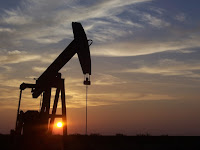IEA released a forecast for petrochemicals demand growth. Per the article, petrochemicals are plastics, fertilizers, packaging, clothing, digital devices, medical equipment, detergents and tires.
Petrochemicals are set to account for more than a third of the growth in world oil demand to 2030, and nearly half the growth to 2050, adding nearly 7 million barrels of oil a day by then. They are also poised to consume an additional 56 billion cubic metres (bcm) of natural gas by 2030, and 83 bcm by 2050.
Demand for plastics – the key driver for petrochemicals from an energy perspective – has outpaced all other bulk materials (such as steel, aluminium, or cement), nearly doubling since 2000. Advanced economies currently use up to 20 times more plastic and up to 10 times more fertilizer than developing economies on a per capita basis, underscoring the huge potential for global growth.
Based on this, the growth won't be driven by the US and Europe, but by developing economies catching up to the US and Europe.
Reuters adds some additional info:
Oil demand for transport is expected to slow by 2050 due to the rise of electric vehicles and more-efficient combustion engines, but that would be offset by rising demand for petrochemicals, the IEA said in a report.
Interestingly, the IEA appears to indicate that demand for oil due to transportation will continue to grow until 2050. I have to believe that the IEA also doesn't forecast peak demand until around 2050. If true, that is contrary to other forecasts I've read that indicate peak demand will be between 2035 - 2040.
Global demand for petrochemical feedstock accounted for 12 million barrels per day (bpd), or roughly 12 percent of total demand for oil in 2017. The figure is forecast to grow to almost 18 million bpd in 2050.
I'm not sure how the Reuters figures tie out to the IEA quote, but IEA states that petrochemicals will represent 50% of demand growth by 2050. Reuters indicates that petrochemicals demand will increase by 6 million bpd (12 million to 18 million) between 2017 and 2050. So does IEA expect demand for oil to increase by 12 million bpd between now and 2050?
S&P Global has this information:
As a result, the IEA expects global oil demand to continue rising over the coming decades to 105 million b/d by 2040, up from 93.9 million b/d in 2016.
That's 11 million bdp between 2016 and 2040. That's kind of in line with the 12 million bpd increase I've come up with out to 2050.
I'm assuming that IEA expects incremental year-over-year oil demand increases to start to slow dramatically. Via the Wall Street Journal:
Global oil demand will grow at a slower pace than expected this year and next amid economic risks stemming from trade tensions and higher oil prices, the International Energy Agency said Friday.
In its closely watched monthly oil-market report, the Paris-based organization lowered its oil-demand growth forecasts for 2018 and 2019 by 110,000 barrels a day to 1.3 million barrels a day and 1.4 million barrels a day, respectively.
So they expect oil demand to increase by 11 mbpd between 2016 and 2040. In 2018 and 2019, oil demand is increasing by 2.7 mbpd via the Wall Street Journal. I'm not sure about 2017, but let's assume it increased by 1.3 mbpd. That's an increase of 4 mbpd come 2019. That leaves an additional 7 mbpd of demand increases between 2020 to 2040. So at some point in the next few years, incremental increases in demand will start to look like rounding errors.
As a counter point for where oil demand might peak at. IHS Markit reports (via CNBC) that they see demand peaking at 113 mbpd. This compares to IEA's 105 mbpd by 2040. Of course, if IEA really sees peak demand hitting in 2050, then there 105 mbpd will climb higher.

No comments:
Post a Comment